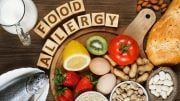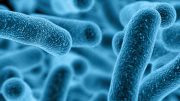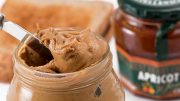
Food allergies are a common and potentially serious medical condition that occurs when the body’s immune system reacts to certain proteins found in foods. Symptoms can range from mild (such as an itchy mouth or skin rash) to severe (such as difficulty breathing or a drop in blood pressure). Food allergies can be triggered by a variety of foods, including peanuts, tree nuts, milk, eggs, fish, shellfish, soy, and wheat.
Inorganic nanoparticles were found to potentially cross the placental barrier and enter breastmilk, increasing the risk of food allergies in infants.
Nanotechnologies have greatly impacted the food industry through improvements in production, manufacturing, and processing methods, with the goal of making food safer and healthier. However, the use of nanoparticles in phytosanitary products, processing aids, food additives, and food-touching surfaces may result in the transfer of nanoparticles to humans through consumption.
A review recently published in Frontiers in Allergy by Mohammad Issa of Université Paris-Saclay and colleagues warns of the potential unintended health consequences of significant changes to food production through the use of nanoparticles. The review presents evidence that nanoparticles can cross the placental barrier and put fetuses at higher risk of potentially dangerous food allergies.
“Due to the immunotoxic and biocidal properties of nanoparticles, exposure may disrupt the host-intestinal microbiota’s beneficial exchanges and may interfere with intestinal barrier and gut-associated immune system development in fetus and neonate,” said Dr. Karine Adel-Patient, corresponding author of the study. “This may be linked to the epidemic of immune-related disorders in children, such as food allergies – a major public health concern.”
Allergies on the rise
Food allergies occur when the immune system overreacts to proteins found in food. Children should usually develop oral tolerance, which allows them to eat without their bodies treating dietary proteins as a threat, but if the immune system or the intestinal barrier are compromised, they may instead become sensitized and develop an allergic reaction.
Food allergies affect between 2-5% of adults and 6-8% of children, and prevalence has risen sharply in recent decades. We know that environmental factors play a significant role in allergy development, and the higher prevalence in children suggests that early-life environmental factors are likely key. Dietary practices and the environment affect gut health in young children, and the deprivation of gut microbiota and a wide range of dietary proteins can affect the development of oral tolerance.
Nanoparticles passed on
To understand how nanoparticles can disrupt this delicate balance, the team focused on three nanoparticle-bearing additives which are regularly found in food.
“Such agents can cross the placental barrier and then reach the developing fetus,” explained Adel-Patient. “Excretion in milk is also suggested, continuing to expose the neonate.”
While nanoparticles crossing the placenta has been demonstrated in rodents, there is also evidence that the additives cross the placenta in humans as well. Nanoparticles are not absorbed in the gut but accumulate there, and affect the bacteria present in the gut microbiome by changing the number of species present and their proportions. Given the evidence for the importance of the gut microbiome in developing a well-educated immune system, this is concerning for allergy development. Nanoparticles also affect the epithelium intestinal barrier, which is another essential component of a healthy reaction to dietary proteins.
Evidence for immunotoxicity is harder to gather, but the team pointed to evidence that the gut-associated lymphoid tissue in humans is also negatively affected by these nanoparticles. This suggests that the effect on the immune system is greater than currently understood, in line with evidence from rodent studies. However, these usually reflect a proportionally higher dose than the estimated consumption by humans.
“The impact of such exposure on the development of food allergy has not been assessed to date,” warned Adel-Patient. “Our review highlights the urgent need for researchers to assess the risk related to exposure to foodborne inorganic nanoparticles during a critical window of susceptibility and its impact on children’s health.”
Reference: “Perinatal exposure to foodborne inorganic nanoparticles: A role in the susceptibility to food allergy?” by Mohammad Issa, Gilles Rivière, Eric Houdeau and Karine Adel-Patient, 5 December 2022, Frontiers in Allergy.
DOI: 10.3389/falgy.2022.1067281









Be the first to comment on "Inorganic Food Additives Might Make Babies More Vulnerable to Potentially Life-Threatening Allergies"